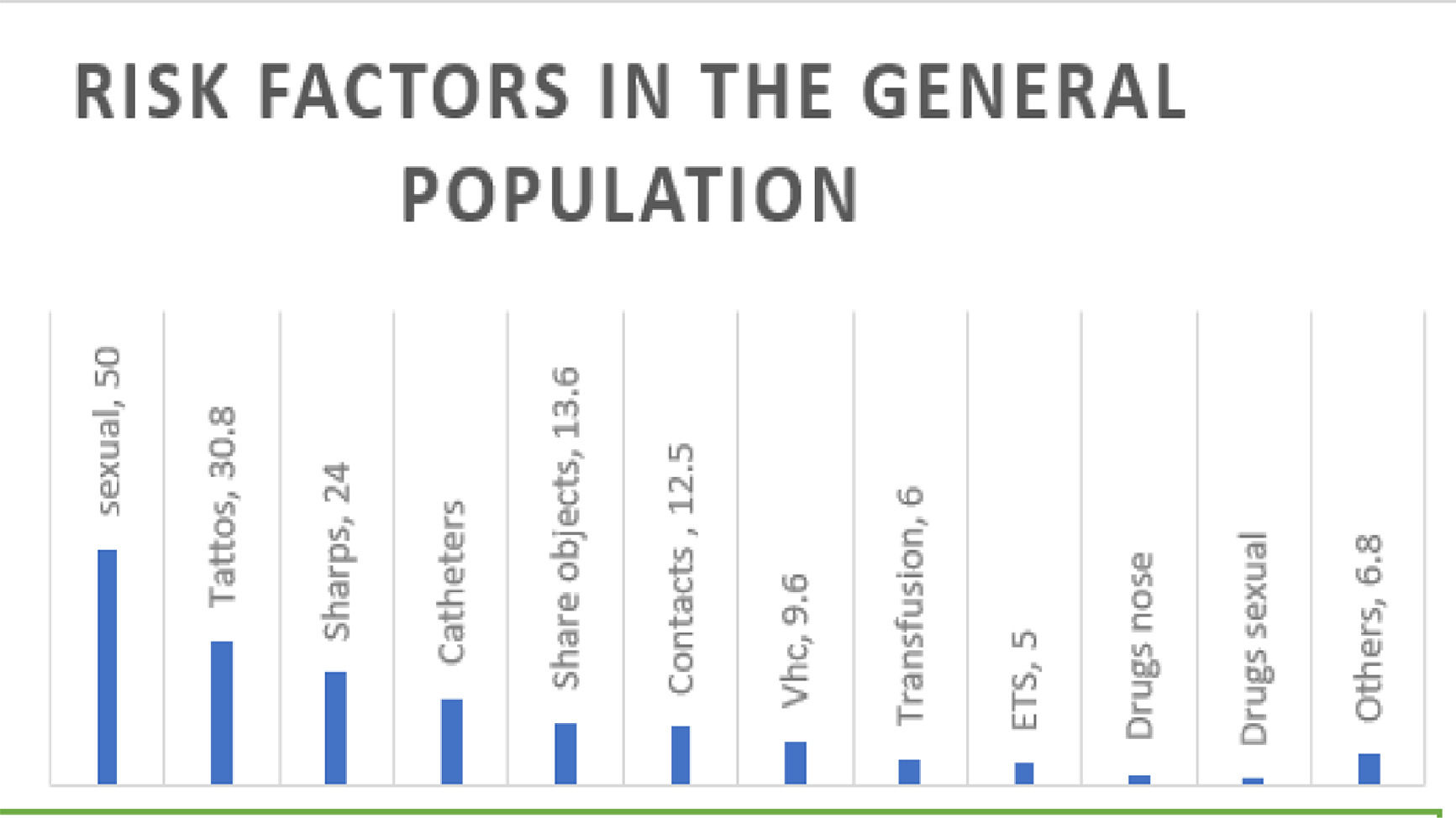
Abstracts from XVII Mexican Congress of Hepatology
Más datosDetection of hepatitis C virus (HCV) infection is effective because there is an effective treatment. In Mexico, a seroprevalence of 1.4% is reported for the population, with the main risk factors being transfusion of blood products and unprotected sexual intercourse. This study aimed to detect anti-HCV and risk factors in La Raza National Medical Center.
Material and methodsObservational, longitudinal and descriptive study. A survey of risk factors was applied to the general population, signing informed consent, and a capillary sample was taken to determine anti-HCV with rapid immunochromatographic tests with colloidal gold for qualitative detection. Data were expressed as means, frequencies and percentages.
Results279 tests were performed. There were 175 women (62.7%) and 104 men (37.2%), and the average age was 44.3 years. The risk factors were: unprotected sexual contact (n=141, 50.5%), presence of piercings or tattoos (n=86, 30.8%), accidents with sharp material (n=67, 24%), contact with catheters or endoscopes (n=52, 18.6%), sharing razor blades or toothbrushes (n=38, 13.6%), multiple sexual contacts (n=35, 12.5%), contact with HCV-positive patients (n=27, 9.6 %), transfusions before 1995 (n=17, 6%), STDs (n=14, 5%), intranasal drug use (n=8, 2.8%), sexual drug use (n=5, 1.7%) and others (n=19, 6.8%). None was reactive. Figure 1.
ConclusionsNo anti-HCV reactive cases were detected. The risk factor, unprotected sexual intercourse, is the main one and the second is the presence of tattoos and piercings, but this did not influence the prevalence.
FundingThe resources used in this study were from the hospital without any additional financing
Declaration of interestThe authors declare no potential conflicts of interest.










